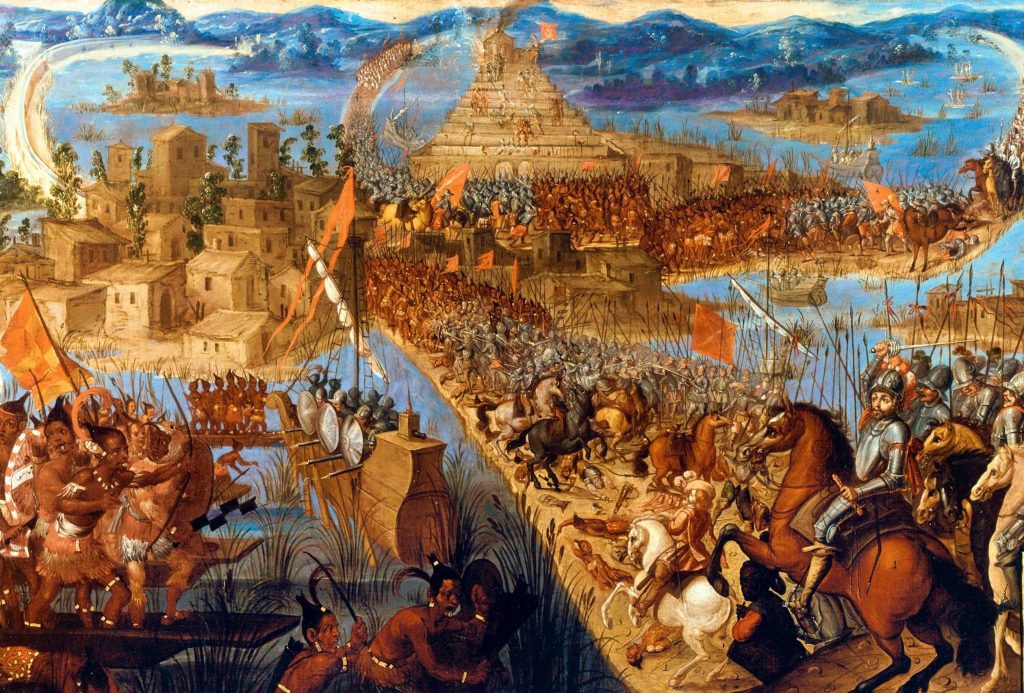In 1519, Spanish conquistador Hernan Cortes arrived in Tabasco with 11 ships and 500 soldiers. Upon hearing about the great Aztec civilization in the west from the natives living in Tabasco, Cortes moved towards the city. Montezuma and his people greeted them as honored guests according to Aztec custom (partially due to Cortes’ physical resemblance to the light-skinned Quetzalcoatl, whose return was prophesied in Aztec legend).

Though the Aztecs had superior numbers, their weapons were inferior, and Cortes was able to immediately take Montezuma and his entourage of lords hostage, gaining control of Tenochtitlan. The Spaniards then murdered thousands of Aztec nobles during a ritual dance ceremony, and Montezuma died under uncertain circumstances while in custody.
European diseases like smallpox, mumps and measles were also powerful weapons against the local population, who lacked immunity to them. A Franciscan monk traveling with Cortés observed the impact of smallpox on the Aztecs. By 1520, smallpox had reduced the population of Tenochtitlan by 40% in just one year.
“They died in heaps…In many places, it happened that everyone in a house died, and as it was impossible to bury the great number of dead, they pulled down the houses over them, so that their homes became their tombs.”
History.com Editors